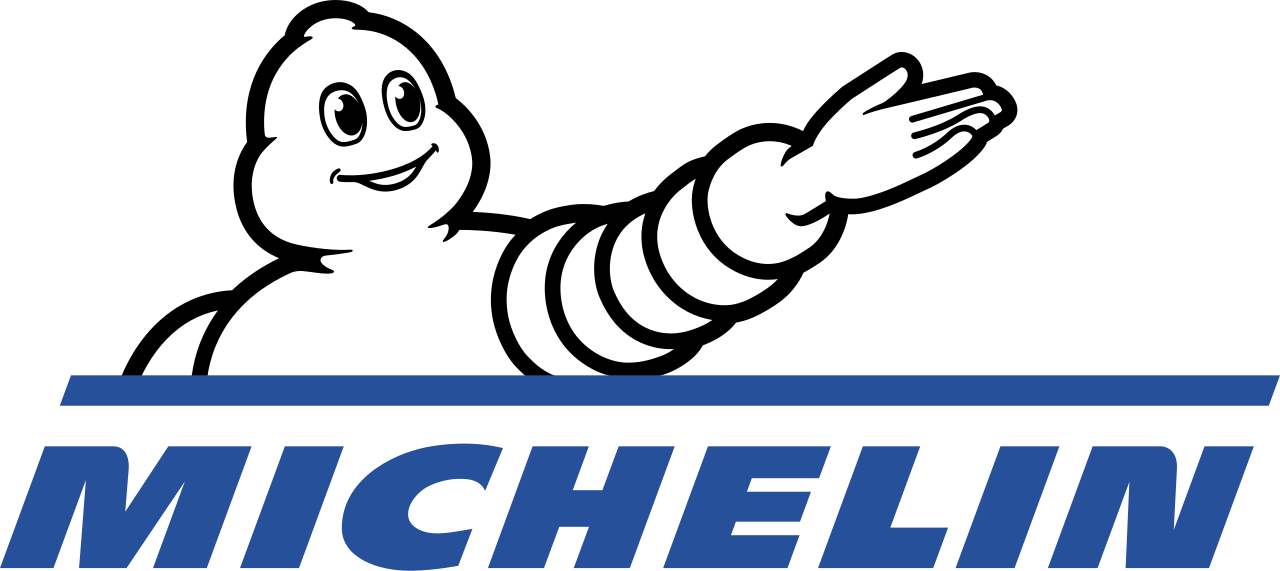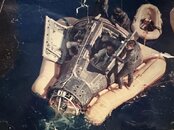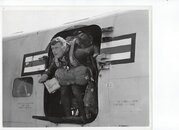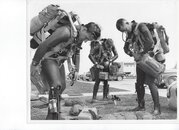Here is an article written in 2011:
2. National News September 15, 2011:
Safari Sub denies it will no longer distribute Nemrod products
Safari Sub niega que vaya a dejar de distribuir Nemrod
After several media echoed the rumour that Safari Sub might have stopped marketing products under the Nemrod brand, the distributor has told
Tradesport that although it has brought some changes in recent months in its distribution policy, its commitment to the mythical brand will continue. After a long history, Nemrod S.A. had ceased trading in the year 2000. Marketing commercial products under the Nemrod name had stopped until Safari Sub acquired the rights to the brand.
Nemrod was founded in 1935 as a toy manufacturer. In 1941, the Vilarubis brothers joined the company and began manufacturing, in Barcelona, masks, fins and spearguns. In 1945, the Nemrod brand was registered and production of regulators began. Metzeler, which had been a Nemrod shareholder almost from the outset, was increasing its share until it reached 100% in 1981. The brand then passed through the hands of large companies, among them Bayer and Pirelli, until the Nemrod S.A. company was forced to close and auction off its assets in 2000. After a period of oblivion and the expiry of the company’s registration, Safari Sub took over the trademark rights and began to combine the distribution of its own Safari Sub brand with products sold under the Nemrod brand.
And here is a company history on the BluTimeScubaHistory website:
3.
Nemrod
In 1945, Pedro and Juan Vilarrubìs Frerrando brothers found Nemrod Industrias Vilarrubìs, initially dedicated to the manufacturing of diving spearguns. The first spearguns are made with spring, with or without surcompressor followed, two years later, by the rubber
Tarzan and
Catapulta models. In 1953, the
Comodoro pneumatic model is launched, followed by a very long series of models such as
Crucero, Fragata, Galeon and, finally, the
Clipper series, which will succeed until 1998, distinguishable because of their tank, which went from red to black. In parallel, the rubber speargun production expands, always more requested because of their silence action and precision.
In the meantime, Nemrod distinguishes itself as the main brand developing in Spain in this period among which Casals, Beltran, Parra, Copino; the latter, soon famous for its sophisticated spearguns.
In Nemrod catalogue, near its spearguns in 1957 the S
nark III two-hose regulator appears, meant to become the longest-life regulator, being in Nemrod price list for almost thirty years. To note that the roman number in its name does not mean any sequence but the number of pressure reductions; in fact, it is the only three-stage regulator ever produced. The
Snark II single-hose double-stage regulator follows, remarkable for its original shape.
In the following years, Nemrod product range broadens. In 1966, the
Siluro diving camera housing is born and, in 1970, the first
Venturi Power fins. The company than, expands in the USA, where imposes itself under the Nemrod by Seamless brand name. Always in the 1970, it associates to the German Metzeler family with which, at the end, it will merge. This partnership becomes one of the largest manufacturers of diving gear, exporting in more than 100 countries and, in the next ten years, its catalogues become richer and richer, with different models of regulators, tanks, suits, buoyancy compensators, fins and, a large choice of accessories.
At the of the end of 1990, after a period of decline, Nemrod brand disappears.
That's quite sufficient for today. Next time, some time midweek, we shall begin to review individual items of Nemrod basic diving equipment starting with diving masks. Until then, stay safe and keep well.
 Today we review the final two Nemrod fins: Michelin and PALS. The Michelin model bears the image of the famous Michelin man, the mascot of the French tyre company based in Clermont-Ferrand, so it is something of a publicity item:
Today we review the final two Nemrod fins: Michelin and PALS. The Michelin model bears the image of the famous Michelin man, the mascot of the French tyre company based in Clermont-Ferrand, so it is something of a publicity item:


 So a semi open heel fin with closed toes and an extended platform to protect the soles of the feet from pebbly Mediterranean beaches. The final image shows the Nemrod hunter logo. The blades are reinforced with thin ribs.
So a semi open heel fin with closed toes and an extended platform to protect the soles of the feet from pebbly Mediterranean beaches. The final image shows the Nemrod hunter logo. The blades are reinforced with thin ribs.






